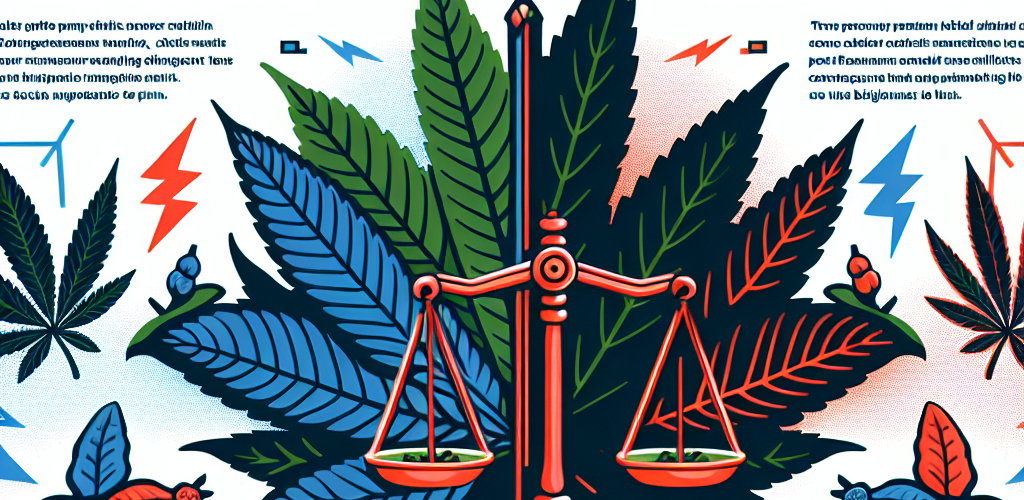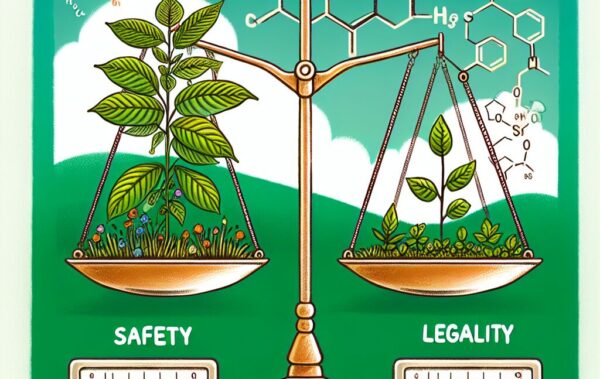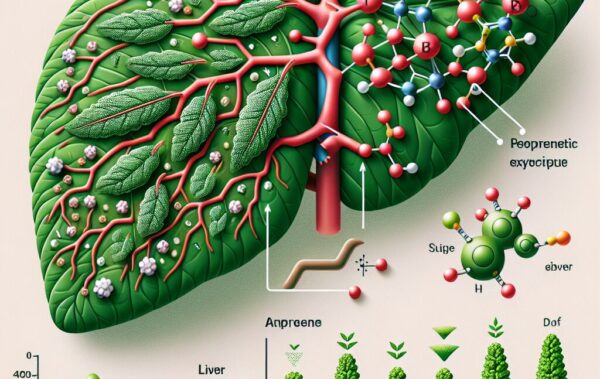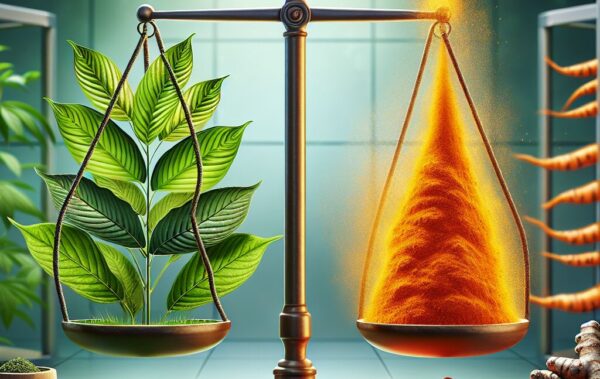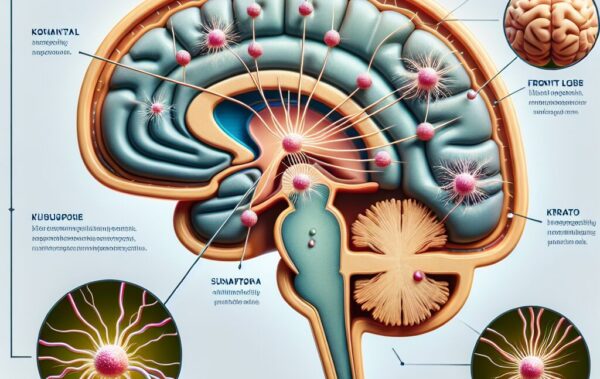- Understanding Kratom and its properties
- Exploring Marijuana’s role in pain management
- Comparing the efficacy of Kratom and Marijuana in treating chronic pain
- Potential risks and side effects of using Kratom and Marijuana
- Frequently Asked Questions about Kratom and Marijuana for chronic pain
Kratom, also known by its scientific name, Mitragyna speciosa, is a tropical tree native to Southeast Asia. It’s part of the coffee family and has been used traditionally for centuries by workers and villagers for its stimulant and sedative effects, depending on the dosage. What makes Kratom especially intriguing in the context of pain management is its diverse range of alkaloids, the most notable of which are mitragynine and 7-hydroxymitragynine.
These substances interact with the body’s opioid receptors, which are part of a complex system responsible for controlling pain, reward, and addictive behaviors. Unlike traditional opioids, however, Kratom seems to generate a more manageable and less addictive profile, which positions it as an interesting alternative for those suffering from chronic pain.
As a natural compound, Kratom comes in a variety of forms for consumer use. At our Kratom shop, you can find an assortment of Kratom powders, capsules, and even edibles suited for different preferences and requirements. Specifically, Kratom powder, which is available in multiple strains, is commonly used for managing pain. Each strain, such as the Bali, Maeng Da, or Borneo, offers different effects, which can range from energizing to sedating.
Many have reported that Kratom has the potential to alleviate chronic pain linked to conditions such as arthritis, fibromyalgia, and back issues. Enthusiasts argue that it provides a natural, herbal therapy alternative to traditional prescription painkillers. Furthermore, when brewed into a tea or taken in capsule form, users note a reduction in symptoms of anxiety and depression, which are often comorbid with chronic pain.
Yet, while the anecdotal evidence continues to grow, it is critical to approach Kratom with the same rigor as any other pain management substance. Research into Kratom is still in its nascent stages, and while it shows promise as an adjunct or alternative therapy for some types of pain, the scientific community is still piecing together its full pharmacological profile, its long-term effects, and its safety. This places great importance on educating consumers about Kratom and its properties before they decide to incorporate it into their pain management regimen.
It’s within this landscape that our understanding of Kratom continues to evolve. As more information comes to light, it’s imperative for users to stay informed, asking the right questions and consulting healthcare professionals when considering Kratom as part of their chronic pain management toolkit.
Exploring Marijuana’s role in pain management
Marijuana, also known as cannabis, is a plant that has been utilized for centuries, both medicinally and recreationally. Its ability to alleviate pain is attributed to its active compounds, cannabinoids, which include tetrahydrocannabinol (THC) and cannabidiol (CBD). THC is the psychoactive component that delivers the “high” that cannabis is known for, while CBD is non-psychoactive and has been recognized for its therapeutic effects, especially in the realm of pain management.
When used for pain, marijuana has shown potential in managing both acute and chronic varieties. This pain-relieving quality may be due to its interaction with the body’s endocannabinoid system, which has been linked to regulating pain perception. For individuals living with chronic pain conditions, including multiple sclerosis, neuropathic pain, and rheumatoid arthritis, marijuana is often reported to bring significant relief.
This relief can be accessed through a multitude of cannabis-based products. Such products span a broad range, from inhaled options like vaporizers and smokeable flower, to edibles, tinctures, liquid extracts, and topical formulations. The mode of consumption can significantly affect the onset and duration of relief, with inhalation acting rapidly and edibles delivering a slower, more prolonged effect.
Moreover, research has observed that marijuana may not only mask pain but can also address accompanying symptoms such as sleep disturbances and anxiety, often prevalent in those experiencing persistent pain. An integral facet of cognitive function in chronic pain sufferers is their quality of life, which marijuana has been noted to improve.
However, like any substance used for medicinal purposes, marijuana’s efficacy as a pain-management solution is not without its nuances and variances. The effectiveness can greatly depend on factors such as the type and source of pain, the individual’s previous exposure to cannabis, and the specific strains and cannabinoid profiles used. Therefore, it’s crucial for individuals to consult healthcare professionals and to carefully consider the legal status and medical guidelines provided in their region before utilizing marijuana for pain management.
As a part of a comprehensive pain management plan, marijuana can offer a more natural, herbal therapy option that may reduce the reliance on prescription opioids, which are often associated with higher risks of dependency and adverse side effects. With the gradual progression of cannabis legalization and the emergence of broader acceptance within the medical community, the role of marijuana in managing chronic pain continues to be a vital area of study and discussion.
The integration of cannabis into a chronic pain management strategy is a highly personalized decision, one that should be informed by a thorough understanding of both the potential benefits and risks. In exploring herbal therapy options, it is equally important to be mindful of dosing and to seek out quality-controlled, lab-tested products from reputable sources, ensuring a safe and effective experience for those living with chronic pain.
Comparing the efficacy of Kratom and Marijuana in treating chronic pain
When comparing the efficacy of Kratom and Marijuana in treating chronic pain, it is essential to consider both the strengths and limitations of each, as well as the need for personalized treatment plans. Chronic pain is a complex and multifaceted condition that requires a nuanced approach.
Kratom, with its opioid-like effects, may target pain pathways directly. Some users report that strains like Maeng Da kratom powder have provided substantial relief from musculoskeletal pain, while others prefer Red Vein kratom capsules for their sedative and analgesic properties. These effects are typically felt within a short period after consumption, and depending on the dosage, can either uplift or sedate the user, potentially making Kratom a versatile option for pain relief at various times of the day.
On the other hand, Marijuana’s cannabinoids, particularly CBD, have been celebrated for their anti-inflammatory properties, which can be instrumental in treating pain. A significant advantage of Marijuana over Kratom is its legalization status in many regions, which has paved the way for extensive research and development of standardized, quality-controlled products. The choice of consumption, be it via vaporizing or edible cannabis products, also offers users a certain degree of control over the balance between immediate and sustained relief.
- Kratom is generally recognized for its quick-acting pain relief.
- Marijuana can offer both rapid and long-duration effects, depending on the mode of consumption.
- Both Kratom and Marijuana can also positively affect mood and anxiety levels, potentially benefiting overall quality of life for chronic pain sufferers.
- The strain and formulation of both substances play a fundamental role in their therapeutic outcomes.
Individual responses to Kratom and Marijuana can vary widely due to factors such as body chemistry, the severity of pain, and tolerance to certain compounds. Hence, some individuals may find one more effective than the other, or that a combination of both yields the best results for their particular condition.
| Substance | Primary Pain Relieving Compounds | Effects Profile | Legality and Accessibility |
|---|---|---|---|
| Kratom | Mitragynine, 7-hydroxymitragynine | Opioid receptor agonist, analgesic, stimulant or sedative | Varies by country and state; not FDA approved |
| Marijuana | THC, CBD | Endocannabinoid system modulator, anti-inflammatory, psychoactive | Legal status varies; medically or recreationally legal in many regions |
Medical professionals must be included in any decision to use either substance for chronic pain management. They can provide guidance on proper usage, potential interactions with other medications, and monitor progress. Cannabis is typically accessed in territories where it is legal via dispensaries, while Kratom can be purchased from sources like online Kratom shops.
Ultimately, while the efficacy of Kratom and Marijuana can be argued from various anecdotal and research perspectives, the subjective nature of pain and individual responses to herbal therapies should drive personal treatment decisions. As the debate continues, so does the call for more rigorous, scientific research to fully understand the roles that Kratom and Marijuana can play in chronic pain management.
Potential risks and side effects of using Kratom and Marijuana
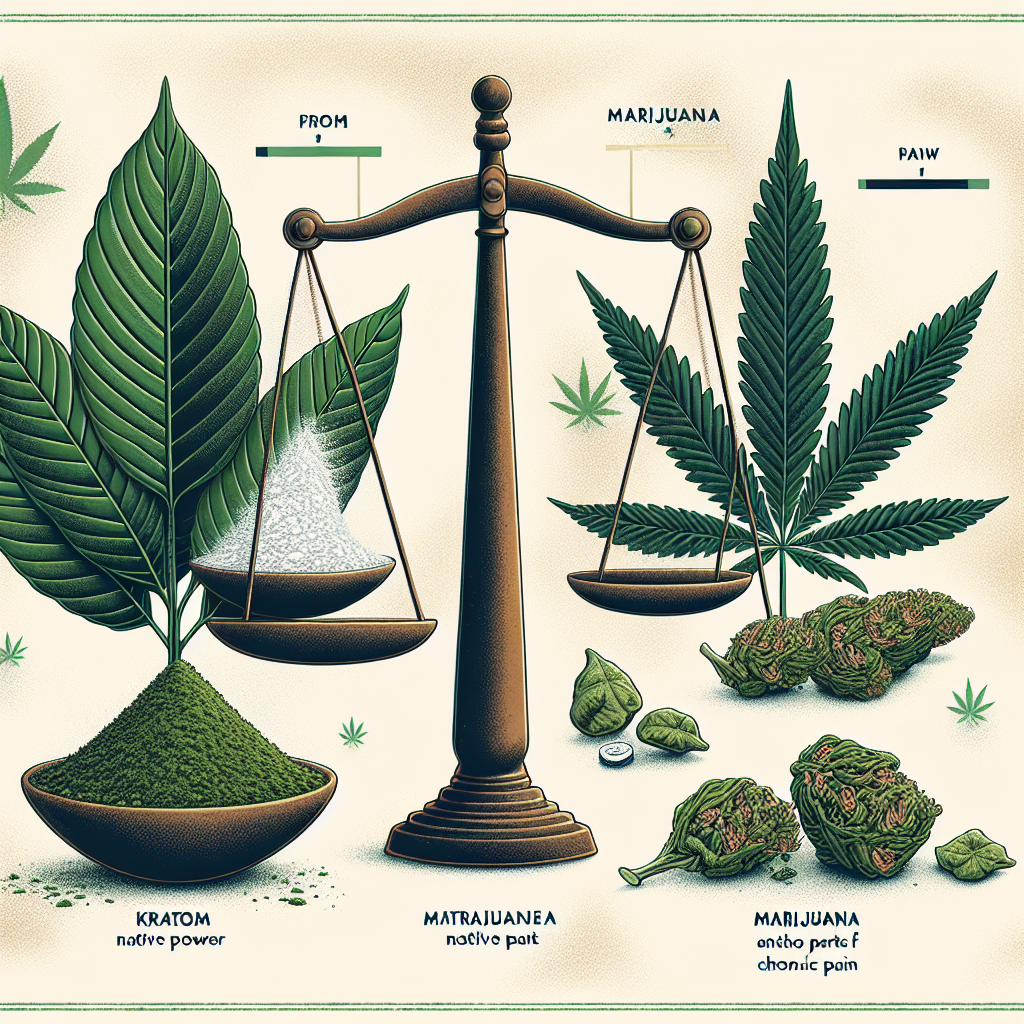 When considering the potential of herbal therapy options like Kratom and Marijuana for chronic pain management, it’s vital to address the potential risks and side effects associated with their use. Both substances, while offering therapeutic benefits for some individuals, also come with their own set of concerns that should not be taken lightly.
When considering the potential of herbal therapy options like Kratom and Marijuana for chronic pain management, it’s vital to address the potential risks and side effects associated with their use. Both substances, while offering therapeutic benefits for some individuals, also come with their own set of concerns that should not be taken lightly.
Kratom’s safety profile is still under scrutiny, as the medical community and regulatory agencies such as the FDA have not yet fully endorsed its usage. As it affects opioid receptors, albeit in a less intense manner than prescription opioids, there is a potential for dependency, particularly among those who might use it excessively or without medical supervision. Additionally, the lack of standardization in production and sale, which you can partly mitigate by sourcing Kratom from reputable online shops, raises concerns about contaminant exposure and inconsistencies in potency.
Side effects related to Kratom use can vary in severity, depending on the dose and frequency of use. Some reported side effects include nausea, constipation, sleep issues, and a dry mouth. There are also more serious risks to consider, such as liver toxicity and potential interactions with other drugs, which underscore the importance of consulting with a healthcare provider before beginning Kratom for pain management.
Similarly, Marijuana, while increasingly recognized for its medical applications, is not without its risks. The psychoactive effects of THC can pose issues with coordination, reaction time, and judgment, making the use of machinery or driving hazardous while under its influence. Longer-term use of Marijuana, especially in high doses, has been linked to mental health concerns, including anxiety, paranoia, and in some cases, exacerbation of pre-existing mental disorders.
The side effects of Marijuana usage also include dry mouth, red eyes, increased heart rate, and in the short-term, memory impairment. For individuals considering Marijuana for pain relief, it is crucial to start with lower doses and to be mindful of the potential of developing tolerance, where increasing amounts become necessary to achieve the same effects.
Moreover, while both Kratom and Marijuana offer potential for managing chronic pain, their legal status varies significantly around the globe. Marijuana has seen a wave of legalization for medical use in many areas, while in others, it remains controlled or illegal, which can limit access and lead to potential legal ramifications. Kratom’s legality is also inconsistent, with some countries and states banning its sale and use.
When evaluating the use of Kratom or Marijuana for pain relief, it’s imperative to weigh these potential risks with the benefits. Chronic pain management is highly individualized, and what works for one person may not for another. Professional medical advice is crucial when considering herbal therapies that have not been subjected to the same rigorous testing and approval process as conventional medicines.
In summary, while both Kratom and Marijuana could be valuable additions to a pain management strategy, their use must be approached with caution. Informed decision-making, guided by healthcare professionals and up-to-date research, is essential in optimizing their effectiveness while minimizing potential adverse effects and legal issues. Carefully evaluating the balance between potential benefits and risks is a cornerstone of responsible chronic pain management.
Frequently Asked Questions about Kratom and Marijuana for chronic pain
Navigating the complexities of chronic pain management can lead to many questions, especially when exploring herbal therapies like Kratom and Marijuana. To provide clarity on common queries, below is a carefully compiled list of frequently asked questions regarding the use of these substances for managing chronic pain.
Frequently Asked Questions about Kratom and Marijuana for Chronic Pain Management
-
Which is more effective for pain: Kratom or Marijuana?
Effectiveness can vary greatly between individuals. Kratom acts on opioid receptors and may provide quick, potent relief, particularly for musculoskeletal pain, whereas Marijuana interacts with the endocannabinoid system and can be effective for inflammatory and neuropathic pain. Personal experience and consultation with a healthcare provider are essential in determining which might be more effective for your specific needs. -
Can I use Kratom and Marijuana together for pain relief?
Some individuals report benefits from using both in tandem; however, this combination should be approached with caution. Interaction effects are not well-researched, and there could be increased risks of side effects. Always consult with a healthcare provider before combining any forms of medication or herbal therapies. -
Are there legal concerns with using Kratom or Marijuana for pain management?
Yes, the legal status of both Kratom and Marijuana varies widely. In some regions, Marijuana is legal for medical use, while Kratom’s legal status can be more unpredictable. Always check your local laws and regulations before obtaining or using either substance. -
How do I choose the right strain or product of Kratom or Marijuana?
The selection of the appropriate strain or product depends on your specific symptoms and desired effects. Research and consultation with knowledgeable vendors at reputable shops or dispensaries can provide guidance. For instance, some may prefer the energizing effects of White Vein Kratom powder for daytime pain management while others might opt for the soothing properties of a CBD-rich Marijuana strain in the evening. -
What are the potential side effects of using Kratom or Marijuana for pain?
Kratom can lead to nausea, constipation, and dependency with prolonged use, while Marijuana may cause psychoactive effects, dry mouth, and short-term memory impairment. It is important to start with small doses and monitor your body’s response to minimize potential side effects. -
Is it safe to drive or operate heavy machinery while using these herbal therapies for pain?
Neither Kratom nor Marijuana should be used when driving or operating heavy machinery, especially if you’re new to these substances or if you’re using products that may have psychoactive effects. -
Where can I safely purchase Kratom or Marijuana?
Purchase from licensed, regulated dispensaries for Marijuana where it is legally available, and from trusted online retailers like Kratom markets for quality-controlled Kratom products. -
How can I ensure that I’m using Kratom or Marijuana responsibly for pain management?
To use these substances responsibly, follow proper dosing guidelines, source them from credible vendors, track your usage and effects, and maintain open communication with a healthcare provider regarding their role in your treatment plan.
Chronic pain management is a journey that may require trying different methods to achieve optimal relief. While Kratom and Marijuana offer potential benefits as herbal therapy options, it is incumbent upon individuals to gather the relevant information, seek sound medical advice, and remain compliant with laws and regulations. Your vigilance in these areas will aid in navigating a safe and effective path through the challenges of managing chronic pain.

